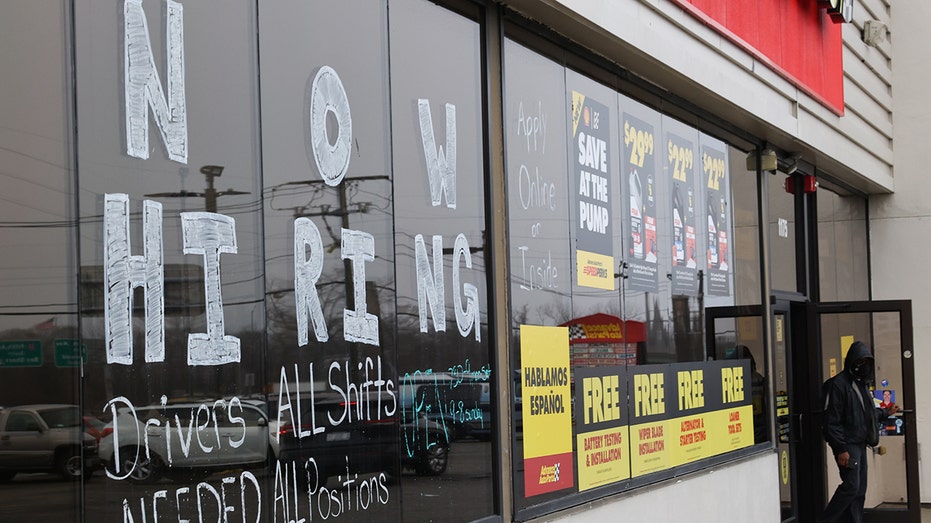Jobless claims unexpectedly rose to highest level since January last week
More Americans filed for unemployment benefits than expected last week
390K jobs added to US economy in May
May jobs report beats expectations with 390K jobs added to the economy. FOX Business' Edward Lawrence with more.
The number of Americans filing for unemployment benefits unexpectedly jumped last week, spiking to the highest level since mid-January in a sign the hot labor market could be starting to cool.
Figures released Thursday by the Labor Department show that applications for the week ended June 4 rose to 229,000 from an upwardly revised 202,000 a week earlier, missing the 210,000 forecast by Refinitiv analysts. It marked the biggest one-week increase since last July. The four-week average of new claims, which smooths volatility in the weekly figures, also increased slightly to 215,000 last week.
HOW THE FEDERAL RESERVE MISSED THE MARK ON SURGING INFLATION
Continuing claims, or the number of Americans who are consecutively receiving unemployment aid, held steady at 1.3 million – the lowest point since December 1969. By comparison, just a little over one year ago, more than 15.38 million Americans were receiving benefits.
"The labor market is cooling a bit after running extremely hot into early 2022," said Bill Adams, chief economist at Comerica Bank. "Initial claims for unemployment insurance are still extremely low, but they are up by 63,000 from their March level, which was the lowest in over half a century. Job postings have also pulled back somewhat, another sign that the job market is getting less red hot."

Bay Shore, N.Y.: A large "Now Hiring" advertisement posted on the windows of the Advance Auto Parts store in Bay Shore, New York on March 24, 2022. ((Photo by Steve Pfost/Newsday RM via Getty Images) / Getty Images)
Claims have hovered around historic lows as the economy continues to recover and Americans ramp up their spending levels. Unprecedented levels of government spending and a speedy vaccine rollout helped to jumpstart the U.S. economy, which expanded 5.7% in 2021. But it also contributed to the worst inflation spike in a decade, which has rapidly eroded Americans' wages and purchasing power.
Businesses have struggled to keep up with the demand, however, and have reported difficulties in onboarding new employees.
The rise in jobless claims comes one week after a separate Labor Department report that showed employers added 390,000 jobs in May, much better than expected.
The labor market has largely remained a bright spot in the economy amid growing fears of a shallow recession.
An increasing number of Wall Street firms, including Bank of America, Deutsche Bank and Wells Fargo, are forecasting the possibility of a downturn within the next two years, as the Federal Reserve moves to aggressively tighten monetary policy in order to cool consumer demand and bring inflation back down to its 2% target.

In this Jan. 29, 2020 file photo, Federal Reserve Chair Jerome Powell pauses during a news conference in Washington. (AP Photo/Manuel Balce Ceneta, File / AP Newsroom)
The Fed already voted to lift the short-term interest rate by 50-basis points in May and has signaled that similarly sized hikes are on the table at upcoming meetings as inflation remains near a 40-year high. Hiking interest rates tends to create higher rates on consumer and business loans, which slows the economy by forcing employers to cut back on spending.
Fed Chairman Jerome Powell has echoed that sentiment in recent public forums and promised the Fed will raise rates as high as needed to cool prices, raising concerns of a central bank-induced recession.
GET FOX BUSINESS ON THE GO BY CLICKING HERE
"What we need to see is inflation coming down in a clear and convincing way and we’re going to keep pushing until we see that," he said last month during a Wall Street Journal live event. "If that involves moving past broadly understood levels of neutral we won’t hesitate at all to do that."





















